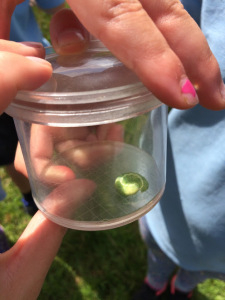
Here at Carlton Marshes we have seen 1600 school children just this summer term, from reception all the way to A Level students, all getting a chance to come and visit the reserve and learn about the wildlife here. Being a Wild Learning Intern part of my role started in assisting these school visits and learning about the activities we provide here. But as time has progressed and our busy season has started I’ve been leading school sessions with the help of our amazing volunteers.
As different year groups come through the reserve certain activities that are school favourites, such as dyke dipping and minibeast hunting, diverge depending on the year group. For example, with a group of year ones who are aged between 5-6, dyke dipping is about finding what creatures live in the water, using the tools such as microscope viewers to inspect them closely and having our team help to identify them. This sparks their excitement and curiosity by introducing a part of the natural world they most likely have never experienced before. In contrast, students at GCSE’s level need to complete practical field work as part of their qualification, so come to the reserve to complete a comparison study between two of our dykes. One of the dykes has previously been polluted with nitrates from an arable field which had a considerable effect on the indicator species found there, whereas the other is unpolluted. The students tested the nitrate levels of both dykes and used a specific methodology while dipping. When identifying the species they found the key ones being indicators species, who are aptly named, give an indication of the dykes water quality. This gave the students the opportunity to explore the variety of fauna found within the water, to think scientifically about their process, and how data they collected showed a difference between the water quality of both dykes. They even managed to find this water scorpion in our polluted dyke, which turns out to be recovering nicely!


